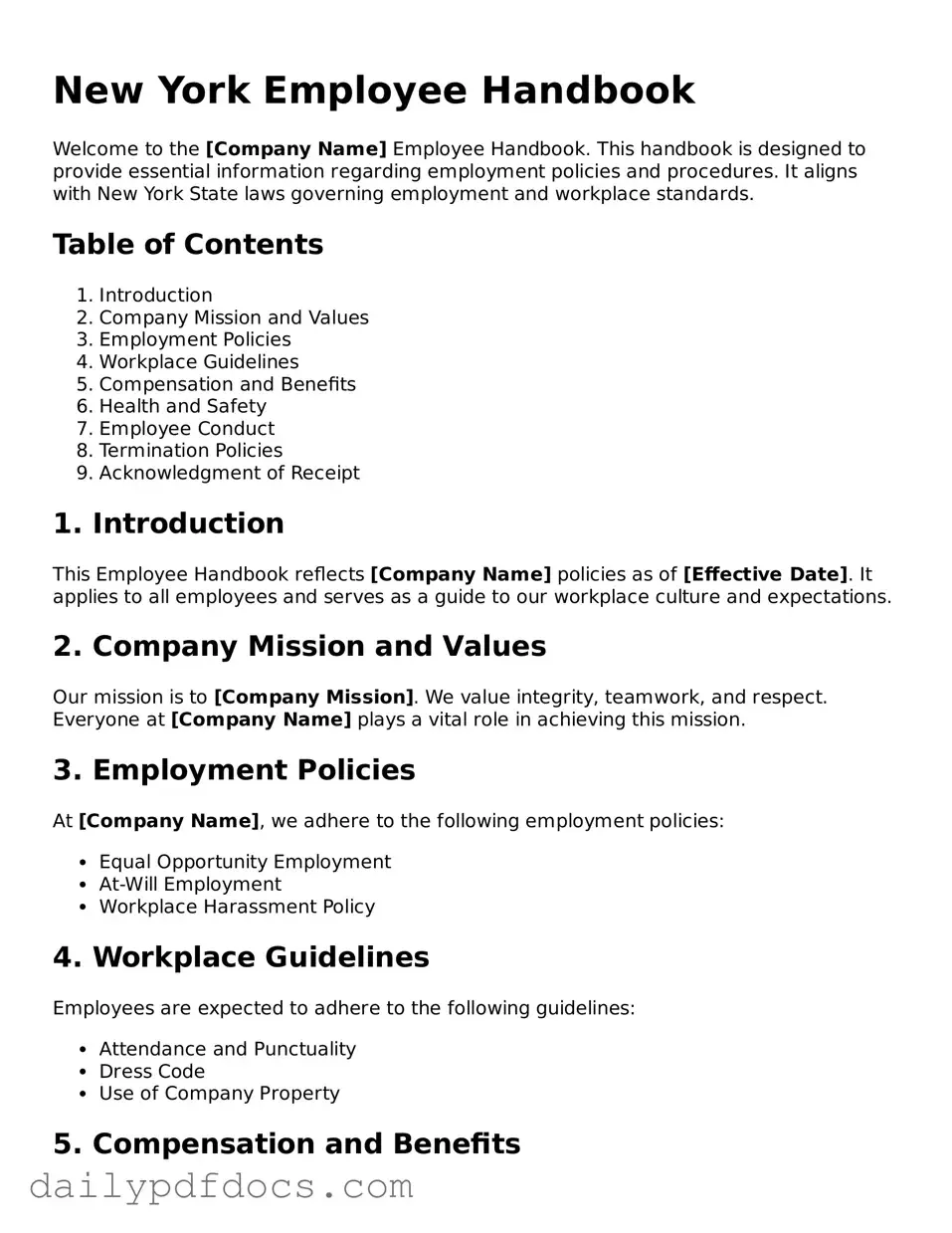What is the New York Employee Handbook form?
The New York Employee Handbook form is a document that outlines the policies, procedures, and expectations of an employer regarding their employees. It serves as a guide for employees to understand their rights and responsibilities within the workplace. This handbook is crucial for establishing a clear understanding of company culture and operational practices.
Why is it important to have an Employee Handbook?
An Employee Handbook is essential for several reasons. It helps ensure compliance with state and federal laws, provides clarity on workplace policies, and sets expectations for behavior and performance. Additionally, it can help protect the employer from potential legal issues by documenting policies and procedures that have been communicated to employees.
Who should receive a copy of the Employee Handbook?
All employees should receive a copy of the Employee Handbook, whether they are full-time, part-time, or temporary workers. Providing each employee with a handbook ensures that everyone has access to the same information regarding company policies and procedures. It's also a good practice to have employees sign an acknowledgment form to confirm they have received and understood the handbook.
How often should the Employee Handbook be updated?
The Employee Handbook should be reviewed and updated regularly, at least once a year or whenever there are significant changes in company policy or applicable laws. Keeping the handbook current ensures that employees are aware of the latest guidelines and helps the company maintain compliance with legal requirements.
What should be included in the Employee Handbook?
Key components of an Employee Handbook typically include an introduction to the company, employment policies, code of conduct, anti-discrimination policies, benefits and compensation information, leave policies, and procedures for addressing grievances. It’s also important to include safety and health guidelines, as well as any other relevant information specific to the organization.
Is it mandatory to have an Employee Handbook in New York?
While it is not legally required to have an Employee Handbook in New York, it is highly recommended. Having a handbook can help prevent misunderstandings and disputes between employees and management. It also demonstrates that the employer is committed to creating a transparent and fair workplace.
Can an Employee Handbook be used in legal disputes?
Yes, an Employee Handbook can play a significant role in legal disputes. If a conflict arises, the handbook can serve as evidence of the company's policies and the expectations set forth for employees. However, it’s crucial that the handbook is clear, consistent, and properly communicated to employees to be effective in such situations.
What should I do if I have questions about the Employee Handbook?
If you have questions about the Employee Handbook, it’s best to reach out to your HR department or your supervisor. They can provide clarification on specific policies and help address any concerns you may have. Open communication is key to ensuring everyone understands the handbook and its implications.
How can I ensure my Employee Handbook is compliant with New York laws?
To ensure compliance, it’s wise to consult with a legal professional who specializes in employment law. They can review your handbook and help make necessary adjustments based on current laws and regulations. Additionally, staying informed about changes in labor laws will help maintain compliance over time.
